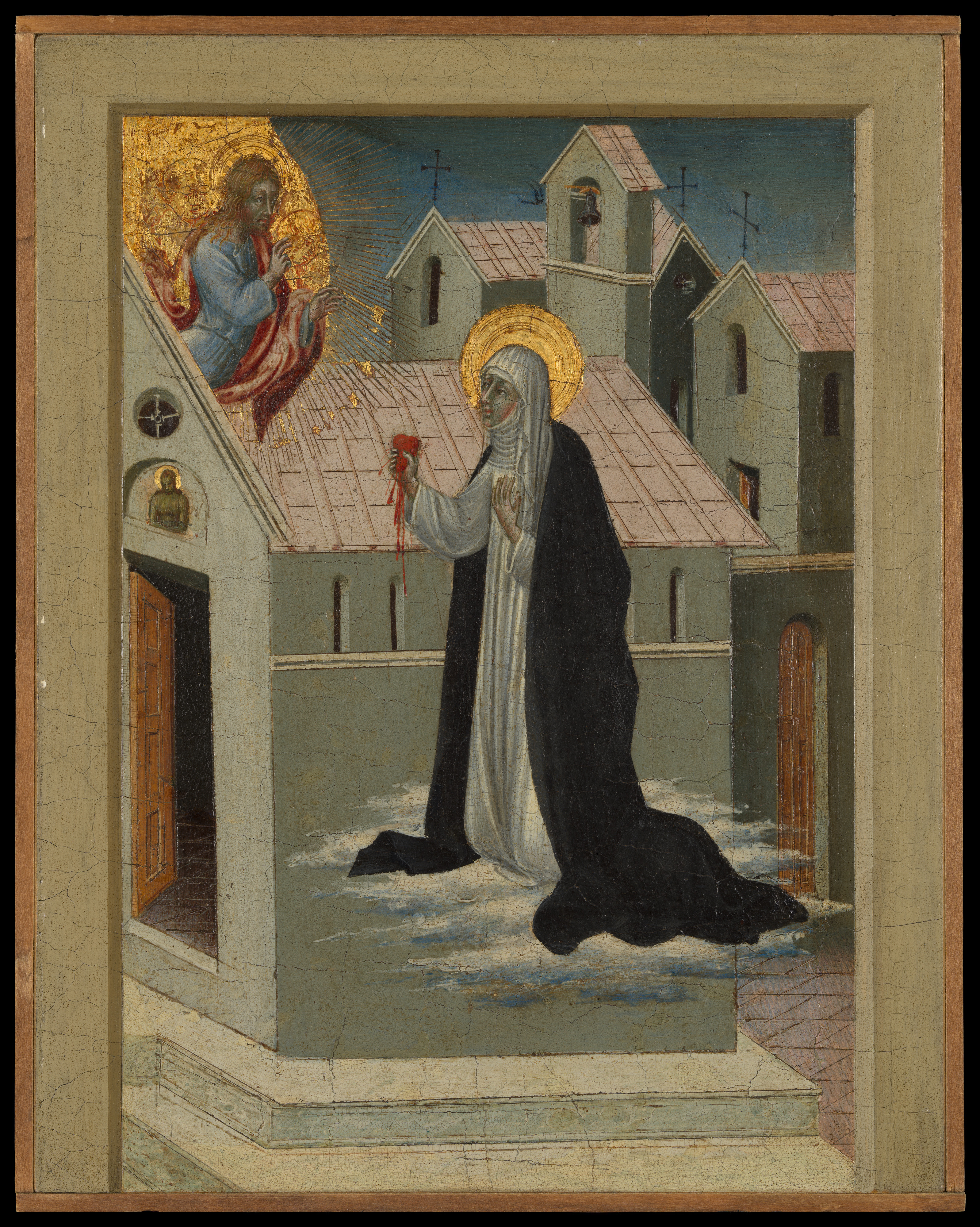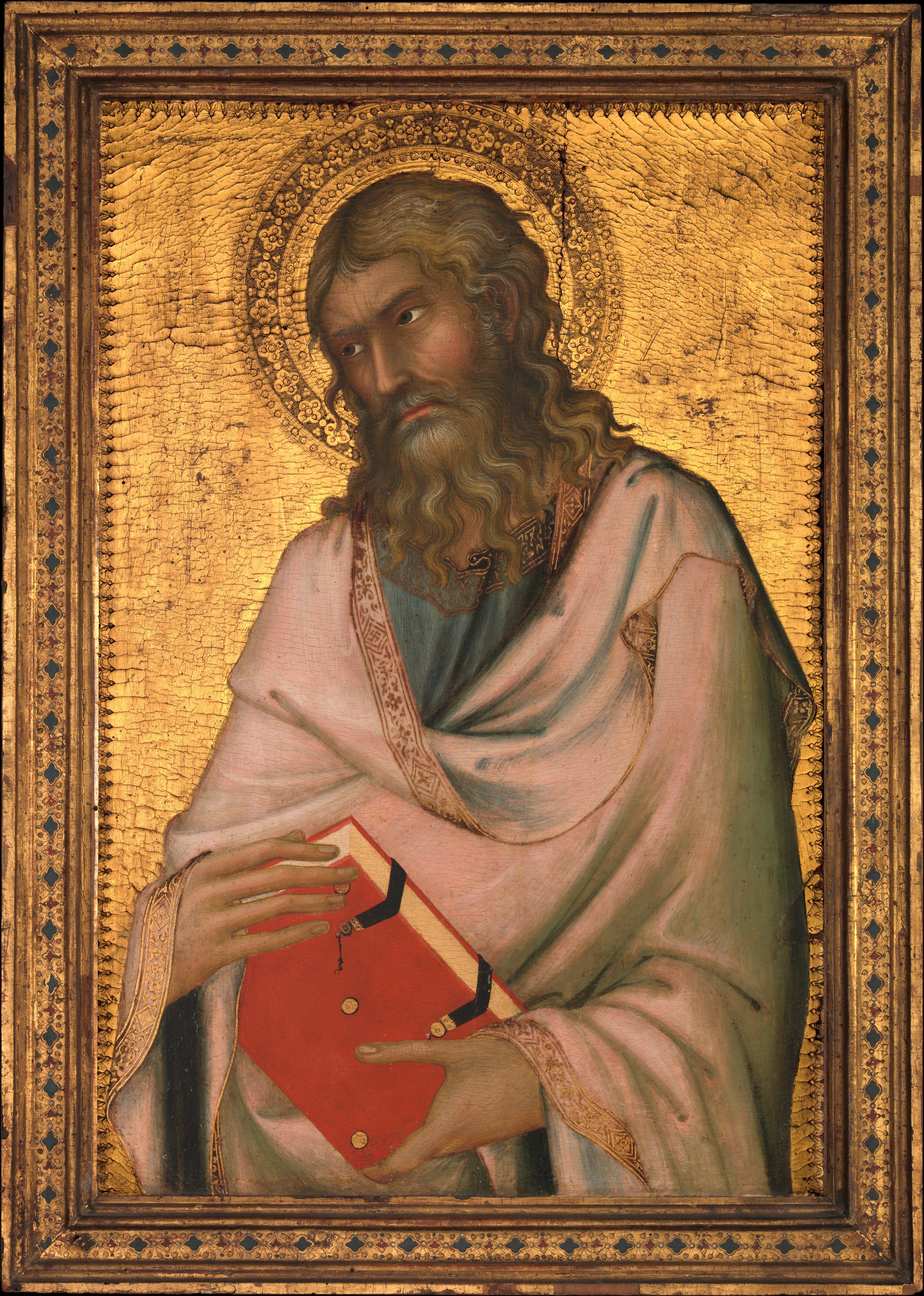Catholic lore regarding the acts performed by the saints is, in a word, otherworldly. Many of the saints are categorized as “mystics”, meaning that they had grown so close to Christ that God would give them revelations and perform miracles through the saint. Many renditions of these mystic acts have been made over the course of history, but this collection will focus on portrayals in Sienese art. Of the Sienese artists, Giovanni di Paolo stands out with his collection of works detailing the life of St. Catherine of Siena by highlighting the mystic nature of the saint through artistic choices. I would argue that the pique of this exemplification can be seen in “Saint Catherine of Siena Exchanging Her Heart with Christ”, in which the painter blends three separate accounts of her life into a single painting, which lifts her relationship with Christ and her mystic nature up into the light. This style from Giovanni di Paolo was a departure from the established norm of the Sienese artists, as we can see through the other works in this collection. Each work shown uses abstraction to serve the narrative they are portraying, whether it be to harken back to religious iconography or to make the subject feel disconnected from the environment. However, I feel that few come close to the style of di Paolo with his dreamlike spaces.
Giovanni di Paolo, Saint Catherine of Siena Exchanging Her Heart with Christ
Tempera and gold on wood, Metropolitan Museum of Art (1997.117.3)

This painting by Giovanni di Paolo combines three separate events in Saint Catherine’s life into a single image. Documented by her confessor Raymond of Capua, the first two events shown are concerning her exchange of hearts with Christ where he first came, opened her side and removed her heart from her. The second event occurred in the church of San Domenico in Siena where Christ appeared to her and placed his own heart in her chest. Lastly, Raymond of Capua had recounted that when deep in prayer and contemplation Saint Catherine levitated, which can be seen in the painting as the cloud she stands on. To supplement these accounts, di Paolo styles the environment around the subjects to emphasize the mystic nature of these events. The impossible angles produced by the roof of the church as well as the de-saturated nature of the background all elevate the actions of Saint Catherine and Christ.
Giovanni di Paolo, The Miraculous Communion of Saint Catherine of Siena,
Tempera and gold on wood, Metropolitan Museum of Art (32.100.95)
This painting depicts a story recounted by Raymond of Capua where he had gone to church without Saint Catherine as she was feeling ill. When Raymond went to serve communion to the congregation, one piece of the bread was missing. According to the story, Saint Catherine had managed to go to the church and was served this communion by Christ himself in another chapel. Giovanni di Paolo uses the space of the painting to combine these two locations, with Raymond of Capua on the right and Saint Catherine on the left, their chapels divided by an imposed column down the center.
Barna da Siena, The Mystic Marriage of Saint Catherine, about 1340
Tempera on panel, Museum of Fine Arts Boston
This painting by Barna da Siena depicts the story of Saint Catherine’s marriage to Christ. In it, Saint Catherine is brought before Christ in a vision where she is wed with Christ and given a ring. This marriage involves Saint Catherine being consecrated and sharing in the sufferings of Christ. In this work, the bond between the two is echoed twice, with the first echo appearing at the feet of the two main subjects. Here Barna da Siena depicts Christ between his mother Mary and his grandmother Saint Anne. Below them two enemies are brought to a peaceful embrace by an archangel, while Saints Margaret and Michael are fighting demons.
Sassetta, The Journey of the Magi, ca. 1433-35
Tempera and gold on wood, Metropolitan Museum of Art (43.98.1)

This painting by Sassetta depicts the journey the Magi took to go visit the newborn Chrsit. Sassetta and di Paolo were active in the Sienese art scene at the same time and forged two very different paths. Where Giovanni di Paolo developed the dreamlike style we see in his later works, Sassetta instead took Sienese painting into a more grounded direction. We can see in this work that he has created more naturalistic details than we normally see in other Sienese paintings. Such details include the rear of the horse as well as multiple figures turned away which brings depth to the typically flat Sienese style of painting
Osservanza Master, The Temptation of Saint Anthony Abbot, ca. 1435
Tempera on panel, Yale University Art Gallery

Originally belonging to a set of eight works depicting the life and lore of Saint Anthony Abbot, this painting tells the story of Saint Anthony’s temptation during his retirement. The woman on the right is representing a devil, denoted by her wings, which is trying to seduce Saint Anthony Abbot out from his life of solitude within the abode on the left. Similar to di Paolo’s work, the unidentified Osservanza Master creates a flattened background that the characters seem out of synch with.
Simone Martini, Saint Andrew, ca. 1326
Tempera on wood with gold ground, Metropolitan Museum of Art(41.100.23)

Simone Martini was one of the most important artists in his time. His attention to detail and delicate tooling helped push forward the International Gothic style, which coincidentally was a great influence on Sienese art. This work depicts Saint Andrew holding the book of the gospel in his hands with a halo surrounding his head. Many praised Martini for the detail put into the Saint’s hands as well as his halo. This style of painting was often how the saints were portrayed, which can show us why di Paolo’s work differed from the established norm.

No comments:
Post a Comment